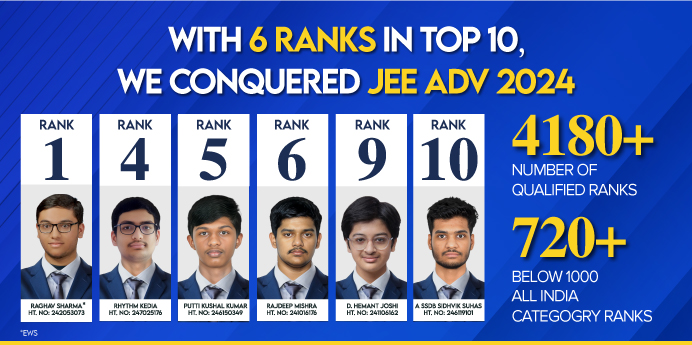









Courses

By Divansh Singh
|
Updated on 21 Dec 2024, 12:27 IST
Compare your JEE Main 2025 marks vs percentile and marks vs rank in JEE Main to understand your position among test-takers. In this article, you will learn how to calculate and analyze your JEE Main marks vs rank 2025 using straightforward formulas. You will also find tools to estimate your rank based on your raw score and understand the JEE Main 2025 percentile score calculation process.
The JEE Main percentile score is a normalized score calculated by NTA to ensure fairness across different sessions of the exam. This article provides a detailed comparison of JEE Main marks vs rank, explains the normalization process, and guides you on how to estimate your rank before the official results are announced.
Dive in to explore the formulas, tools, and tips that will help you better prepare for your results.
JEE Main is a national-level entrance exam conducted by the NTA for admission into engineering programs. Understanding the relationship between marks, percentile, and rank is crucial for candidates aiming for top institutes like NITs, IIITs, and CFTIs.
The JEE Main exam takes place in multiple sessions with varying difficulty levels. To ensure fairness, the National Testing Agency (NTA) uses a normalization process. This converts your raw marks into a percentile score, ensuring an even playing field.
The percentile score is calculated using the formula:
Percentile = (Number of candidates with marks ≤ yours / Total candidates in your session) x 100
For example, if 1,00,000 students appear in your session and 98,000 scored less than or equal to you, your percentile is 98.00%. This process ensures uniformity across sessions and helps in creating a combined rank list.

The JEE Main percentile calculation is crucial for determining your rank and understanding your performance relative to other candidates. It ensures fairness by comparing raw scores across multiple sessions with varying difficulty levels. Here is a detailed breakdown of how it works and how tools like the JEE Main rank predictor can help:

JEE

NEET

Foundation JEE

Foundation NEET

CBSE
Percentile represents the percentage of candidates who scored less than or equal to you. It provides a normalized ranking system to ensure uniformity among candidates across sessions.
Percentile = (Number of candidates with marks ≤ yours / Total number of candidates in the session) x 100
A higher percentile indicates better relative performance and translates to higher ranks. For example, a percentile of 99.5 means you performed better than 99.5% of the test-takers.
Tools like the JEE Main rank predictor simplify the process by calculating your probable rank based on your percentile. These tools use historical data and normalization techniques to offer precise insights.
| Marks Range (Out of 300) | Percentile Range |
| 286 - 292 | 99.998 - 99.999 |
| 280 - 284 | 99.996 - 99.997 |
| 268 - 279 | 99.990 - 99.994 |
| 250 - 267 | 99.952 - 99.990 |
| 231 - 249 | 99.873 - 99.950 |
| 215 - 230 | 99.745 - 99.870 |
| 200 - 214 | 99.575 - 99.739 |
| 175 - 199 | 99.021 - 99.348 |
| 150 - 174 | 98.074 - 98.996 |
| Below 150 | Below 98.00 |
This table helps students estimate their percentile ranking in JEE Main based on their expected marks.
The JEE Main scorecard analysis provides critical insights that help candidates predict their rank accurately:

By following these steps, candidates can better understand their standing among peers and estimate their probable JEE Main rank with confidence.
The following table provides the JEE Main Marks Vs Rank 2025 analysis based on historical trends. It offers a detailed overview of how marks translate into rank:
| Marks Range | Rank Range |
| 288 - 294 | 1 - 20 |
| 280 - 284 | 21 - 44 |
| 268 - 279 | 45 - 107 |
| 250 - 267 | 108 - 522 |
| 231 - 249 | 523 - 1,385 |
| 215 - 230 | 1,386 - 2,798 |
| 200 - 214 | 2,799 - 4,666 |
| 175 - 199 | 4,667 - 10,746 |
| Below 175 | Above 10,746 |
This JEE Main Marks Vs Rank analysis for 2025 is based on historical data and recent trends:
Reservation plays a significant role in shaping ranks for candidates under categories like EWS, OBC, SC, and ST. Below is a detailed table based on the previous year's data of JEE Main rank vs marks category-wise and recent trends to provide better insights:
| Category | Marks Range | Expected Rank Range |
| General | 280+ | Top 50 |
| 200 - 280 | 500 - 5,000 | |
| 150 - 199 | 5,001 - 15,000 | |
| EWS | 250+ | Top 200 |
| 200 - 249 | 1,000 - 7,000 | |
| 150 - 199 | 7,001 - 20,000 | |
| Below 150 | Beyond 20,000 | |
| OBC | 250+ | Top 100 |
| 150 - 249 | 1,000 - 10,000 | |
| Below 150 | Beyond 10,000 | |
| SC/ST | 150+ | Top 500 |
| 100 - 149 | 1,000 - 10,000 | |
| Below 100 | Beyond 10,000 |
Key Insights:
Understanding the relationship between your category rank and percentile is crucial for candidates aiming for admission under reserved categories like EWS, OBC, SC, and ST. Below is a detailed table showing how percentile translates into category ranks based on historical trends:
| Percentile Range | General Rank Range | EWS Rank Range | OBC Rank Range | SC Rank Range | ST Rank Range |
| 99.9+ | 1 - 100 | 1 - 20 | 1 - 50 | 1 - 10 | 1 - 10 |
| 99 - 99.89 | 101 - 5,000 | 21 - 500 | 51 - 1,000 | 11 - 300 | 11 - 250 |
| 97 - 98.99 | 5,001 - 20,000 | 501 - 2,500 | 1,001 - 5,000 | 301 - 1,000 | 251 - 800 |
| 90 - 96.99 | 20,001 - 70,000 | 2,501 - 8,000 | 5,001 - 20,000 | 1,001 - 4,000 | 801 - 3,000 |
| 80 - 89.99 | 70,001 - 1,50,000 | 8,001 - 15,000 | 20,001 - 50,000 | 4,001 - 10,000 | 3,001 - 8,000 |
| Below 80 | 1,50,001+ | 15,001+ | 50,001+ | 10,001+ | 8,001+ |
Understanding the relationship between percentile and rank in JEE Main is crucial for predicting admissions outcomes. The following table illustrates how percentile translates into rank with detailed insights across categories and performance levels:
| Percentile Range | Approximate Rank Range | Performance Insights |
| 99.9+ | Top 100 | Exceptional performance, likely admission into IITs or top NIT branches |
| 99.8 - 99.89 | 101 - 1,000 | Highly competitive, suitable for premier engineering programs |
| 99.5 - 99.79 | 1,001 - 5,000 | Competitive for top NITs and IIITs, excellent for popular branches |
| 99.0 - 99.49 | 5,001 - 10,000 | Strong performance, options in mid-tier NITs and IIITs |
| 98.0 - 98.99 | 10,001 - 20,000 | Good performance, access to decent engineering branches in NITs |
| 96.0 - 97.99 | 20,001 - 50,000 | Moderate rank, potential admissions to state-level colleges or lower-tier NITs |
| Below 96.0 | Above 50,000 | Below-par performance; limited chances for top engineering institutes |
Insights:
For NIT admissions under the EWS category, the required marks typically vary depending on the specific NIT and the branch. Based on historical trends:
The relationship is established through the JEE Main normalization process explained by the NTA. It ensures fairness across sessions by comparing raw scores to the relative performance of candidates.
To secure a 99 percentile, aim for at least 175 marks.
With 180 marks, you can expect a rank between 4,500 and 7,000, depending on the exam difficulty and session variations.
You can calculate percentile using the formula:
Percentile = (Number of candidates with marks ≤ yours / Total candidates) x 100.
The expected rank for 150 marks in JEE Main ranges between 10,000 and 15,000.
To predict JEE Main rank from percentile, use rank predictor tools or historical data for guidance.